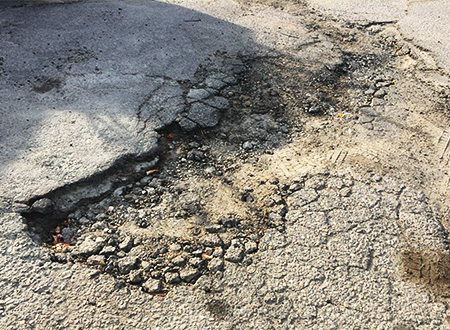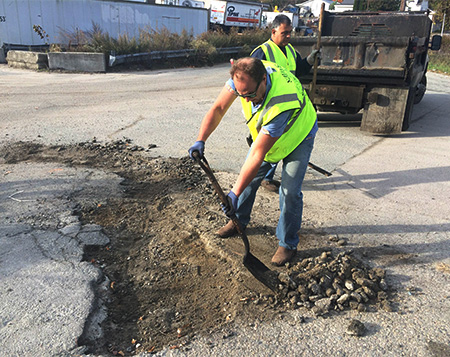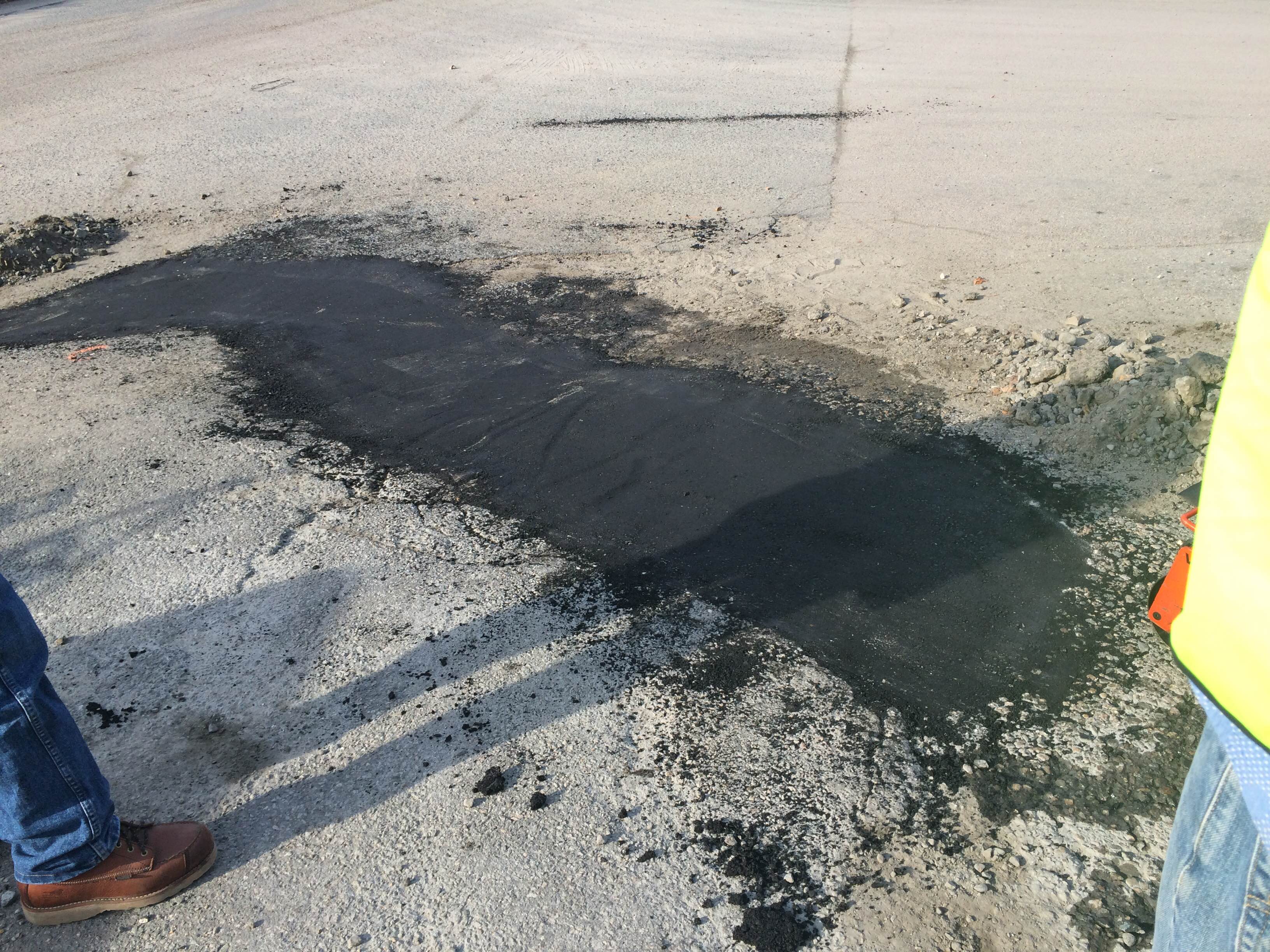by
[user not found]
| Oct 29, 2015
For many years, VIBCO has been very active in empowering Rhode Island cities and towns to take the right steps to repair their roads and this morning in northern Rhode Island was another instance of VIBCO taking to the streets (literally) to assist the Department of Public Works of this town to take the proper steps to repair their town's potholes.
Year after year, Rhode Island ranks among the states with the worst roads in the nation. Rhode Island's roads have been called "structurally deficient"and in generally "poor condition" and almost half of the state's roads are unsuitable to drive on.
A Big Job For A Small Roller
The town we visited in northern Rhode Island was like many of the towns in Rhode Island: intimate, working and, unfortunately, suffering from crumbling roads.
Our job in this town this morning was to help the town's DPW team with their pothole repair technique*. Upon arriving in Johnston, we were introduced to the town's fhighway department foreman and his assistant before heading to the site of the pothole.
Here was the pothole we were repairing today:

That's a pretty big pothole and one that the DPW's foreman had doubts that the VIBCO GR-1600H 'Pothole Patcher', their main pothole patching tool could tackle.
Potholes can range in size and depth but most tend to be on the smaller size, usually about a foot in diameter. This pothole was considerably larger and developed on an incline and mid-sized swale. The pothole was deeper and more developed on on side than the other, the side that incoming trucks would turn into before getting into the driveway.
The main concern of the foreman was whether or not the pothole could even handle the project. The foreman was skeptical that the GR-1600H had the power and ability to fix (and keep fixed) a pothole this size and whether or not a a double-wheel ride on roller was needed instead.
We were prepared to show that our pothole patcher could tackle the job.
Preparing and Filling the Pothole
We're very big on teaching and practicing proper pothole patching procedure here at VIBCO and today was no different. We began by using shovels and hoes to clear out the debris from the pothole and defining the edges. Next, we used a leaf blower to clear out the fine material from the pothole and further define the edges of the pothole.
 Next came the patch material, a fine grain asphalt mix. We started loading in the patch material in to the pothole making sure to add more than was needed to move around and fill in areas that were going to need it. The material was spread around using a lute, making sure to evenly cover the entire pothole.
Next came the patch material, a fine grain asphalt mix. We started loading in the patch material in to the pothole making sure to add more than was needed to move around and fill in areas that were going to need it. The material was spread around using a lute, making sure to evenly cover the entire pothole.
Then the GR-1600H was brought in. As the GR-1600H was turning on, a little bit of lubricant was released from the container (what is the proper name) onto the drum of the roller. The lubricant helps the roller drum move smoothly across the patch material without pulling up loose material onto the drum.
The patch material was static rolled first before the vibration was activated. The proper way to roll patch, whether hot, cold or otherwise, is from the hardest surface to the softest surface, making sure to work from the outside of the pothole inward and pulling back in a slow, controlled way.
Wrapping Up The Job
When the equipment was turned off and put away, here was the final result:

Not only was the GR-1600H able to tackle the size of the pothole, it was able to do so in only a few minutes and leave behind a tightly packed pothole seal.
Read more about our GR-1600H Pothole Patcher here and our Pothole Free RI initiative here.